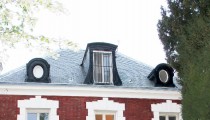Best of MyStylery Who: Katharina Schmitter, Textile Designer Where: Paris,…
At home with Cultural Manager Dr. Gerald Matt
Who: Dr. Gerald Matt, Cultural Manager
Wo: Vienna, Austria

The apartment of Dr. Gerald Matt in an old building: The door opens and I enter a different world
Presumably he is one of the last Bohemians of Vienna, who celebrates the savoir vivre with Austrian grandeur. A dandy straight out of a picture book: Dr. Gerald Matt, cultural manager and art consultant, who has led the Viennese “Kunsthalle” for 16 years and has established the contemporary art there until he had a falling out with the cultural politics. Today he works for a TV-Show, writes columns for Austrian magazines, and teaches as guest lecturer at the University of Applied Arts in Vienna. Just a stones throw away from the Naschmarkt – in the sophisticated 6th district – I visit the art expert, who says about himself that he is a manic collector and even owns more than 4.000 neckties. The door opens, and I enter a different world, with jazz music playing quietly in the background. On record self-evidently.
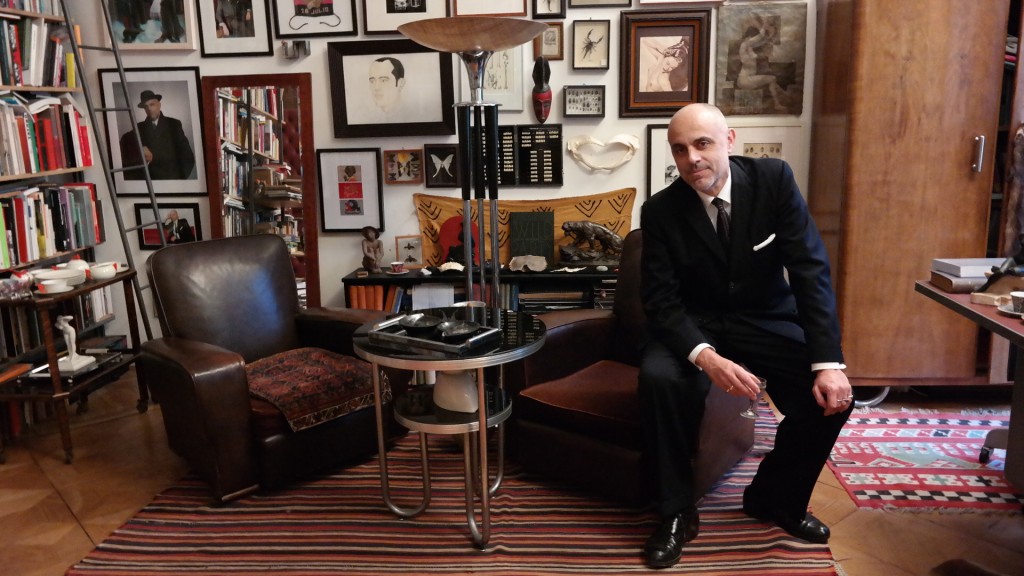
Dr. Gerald Matt, Cultural Manager and Art Consultant in his Viennese refuge
MyStylery: Dr. Matt, how does one become a manic collector?
Dr. Gerald Matt: Well, if you love fine objects or as so appropriately said by British philosopher Walter Pater: “The power of being deeply moved by a beautiful object”. As a collector I learned to see things in a cultural-temporary context. I know if a necktie originates from the 30s or 40s. Those from the American 40s are much broader cut similar to the wide trouser legs of that time. A lot of fabric is a sign of the affluent society after World War II.
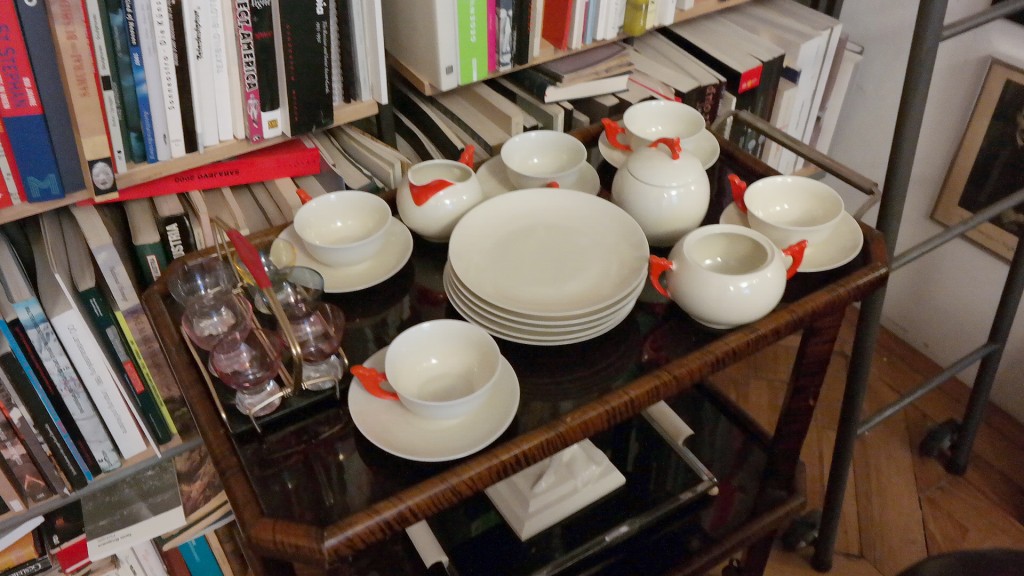
Flea market finds: Bone china of the 50s with matching liqueur glasses
MS: Is there something from special value to you?
GM: I can’t really answer that. It’s probably something that’s gotten lost or that I can’t find right now. You know it from interpersonal relationships. Suddenly someone’s gone and only after you experience the loss.
MS: Does that mirror your experience with women?
GM: I fully agree with Giovanni Agnelli who once said, I’d rather speak to women than about them.
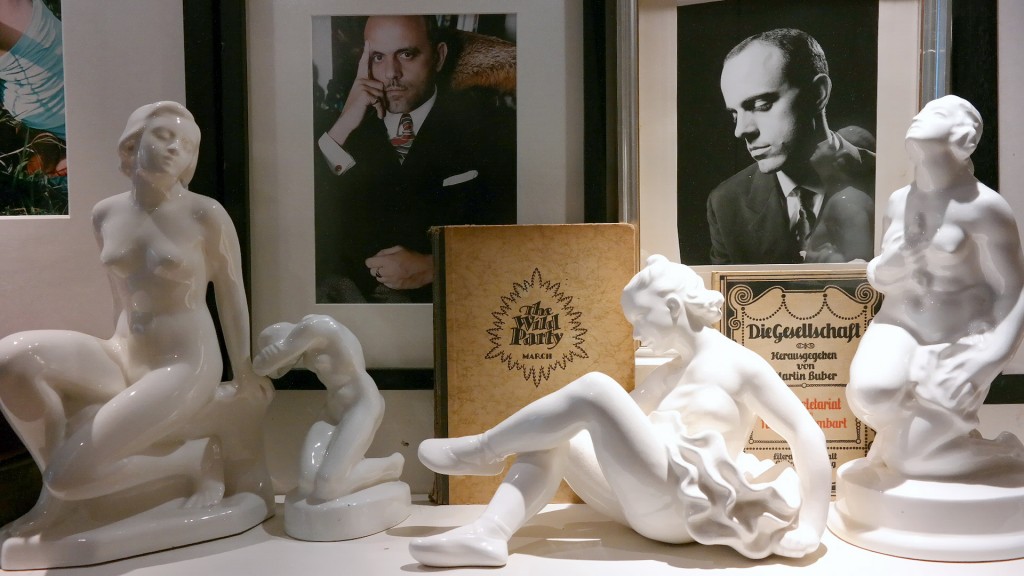
“Just because someone dresses a little better, wears a necktie, and polished shoes, he must not be a dandy.”
MS: How narcissistic are you? There are a striking number of photos of you in dandy attitude hanging on the walls.
GM: The term is often misinterpreted because nowadays no one knows what a dandy actually is anymore. Just because someone dresses a little better, wears a necktie, and polished shoes, he must not be a dandy. My posture only expresses a little distance, a little disinterested pleasure to recite Kant.
MS: Do people nowadays dress badly in your opinion?
GM: Yes, absolutely terrible! They chase after fashion without any quality awareness for workmanship and fabrics. It has to be the newest outfit. Only the industry profits from this mindlessness.
MS: You on the other hand look like a time traveller coming straight from another area.
GM: Well I like wide trouser legs. That’s comfortable and when I lift my leg, it gets something flighty that makes me think of Fred Astaire. Don’t mistake it for the 70s. They stand for nylon, body odor, and revolutionary attitude.
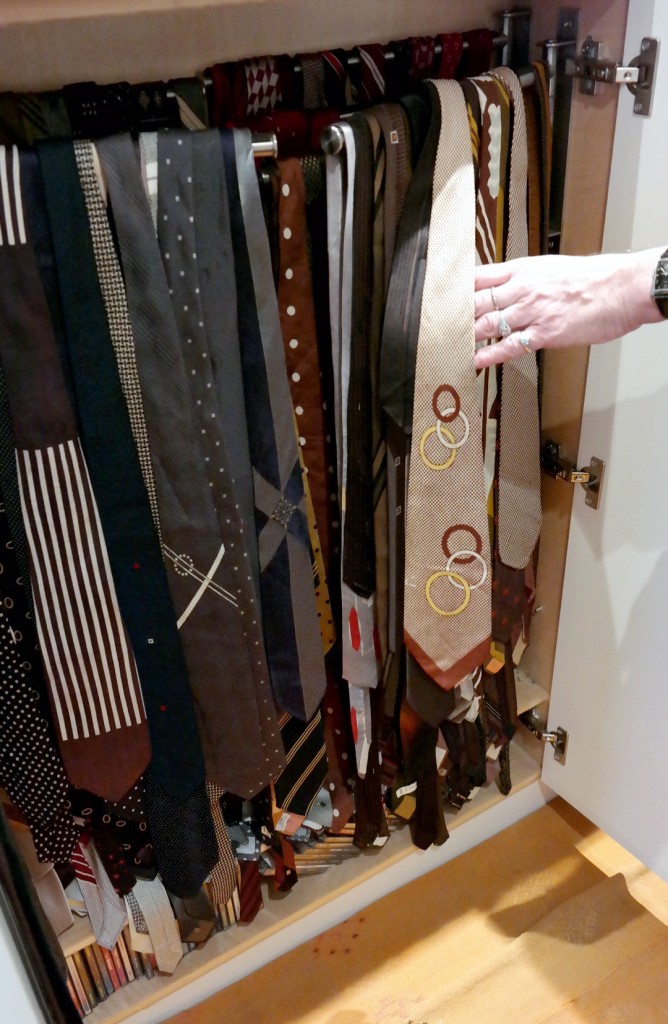
What does a man do with 4.000 ties?
MS: Do you own a pair of jeans?
GM: Yes, two classics, which I only wear when I’m in Texas.
MS: Therefore you have neckties a fortiori. What does a man do with 4.000 ties?
GM: Why do art enthusiasts have 4.000 paintings, why do women have hundreds of pair of shoes? I like changing my necktie, even though I haven’t worn all of them yet.
MS: You also have a soft spot for 60s fashion?
GM: Right, but good fashion outweighs room and space. Even though it depends on my mood if I choose a suit from the 40s, 50s or 60s. Today I had an appointment with the tax office and my mood was quite peevish. So I went in a dark blue single-breasted suit.
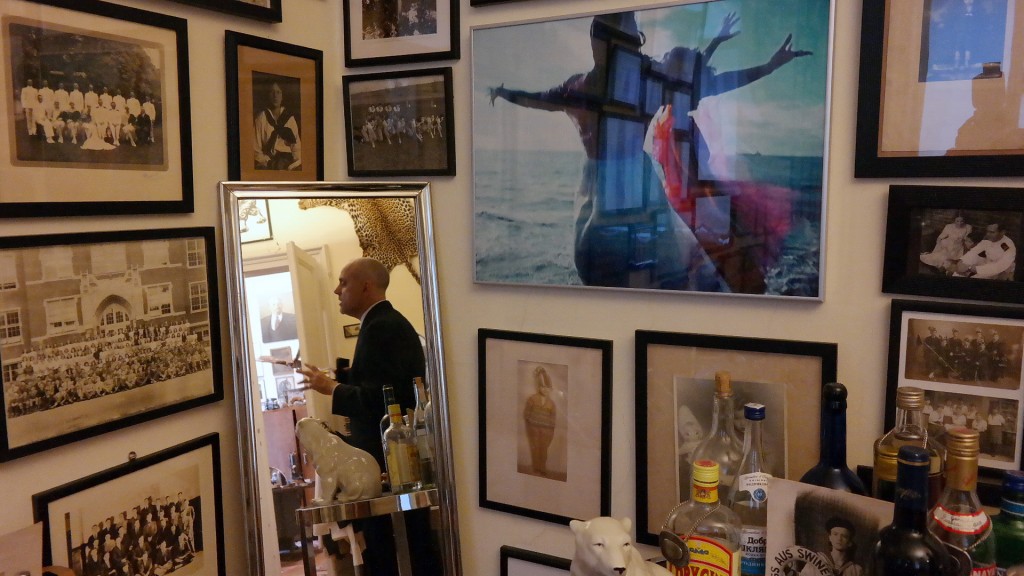
Reflections
MS: It appears as if you live a little bit backward looking.
GM: (astonished) Do you think so? I don’t think it’s old-fashioned when you like cultivated footwear, wear ties, and use half decent manners. I find it avant-gardist and forward-looking. The question is how the future is going to be like. But that’s up to every single one of us.
MS: And your apartment? The atmosphere is quite museum-like, isn’t it?
GM: I love quality, you know, and you just don’t get that anymore. Leather suitcases for example or steel suitcases from Halliburton … today they cost you a fortune! Besides most of them are unpleasant and poorly manufactured. And reading books is by no means out of fashion! Whether it is a first edition of Walter Serners “Letzte Lockerung” or Perry Mason crime novels from the flea market.
MS: Do you read them as well?
GM: Self-evidently!
MS: And the revolver next to them is just to make sure. Are you a little bit paranoid?
GM (laughs): That’s only for an emergency. Not loaded of course. I rather play with these things. That’s all a mock-up. If I had a real one obviously I wouldn’t tell you. I’d get a bad reputation. And the surprise effect wouldn’t be there if the unwelcomed visitors came indeed.
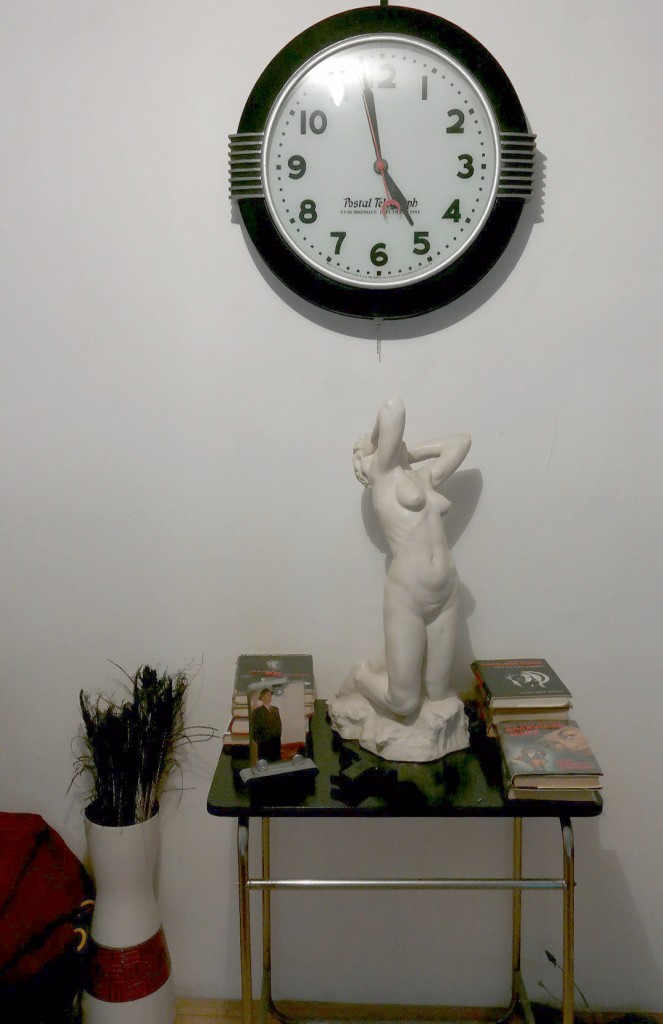
Perry Mason-books from the flea market and the revolver next to them: “Not loaded of course.”
MS: You used to be director of the Viennese Kunsthalle for 16 years – not anymore.
GM: That’s right. I left – after the most successful year in history with over 200.000 visitors. I was so sick of the permanent conflict with an assemblyman from the green party. Art is the extraordinary to me, the other, the ingenious, not participation and grass-roots democracy. But Vienna lives from the intrigue, it applies the more danger, the more honor. I did not disappear; on the contrary, I teach at the university and have my own TV-Show and write comments for magazines. People should see: Ah, he’s still alive.
MS: Why didn’t you leave Vienna behind?
GM: I travel a lot; spend time especially in New York and Warsaw. Vienna is my safe harbor. Besides I like to walk a lot, which doesn’t work in an oversized city like Berlin – which from the Panam Lounge to Käthchens Ballhaus, I appreciate a lot. In the city center of Vienna you can reach everything by foot. And I love the Viennese coffeehouses, kind of public living rooms. In Vienna you can dine exquisitely in the local restaurants. To get good, down to earth food in a city like Berlin, you have to go to really expensive restaurants. But fine wining and dining always stood under general suspicion for Protestants.
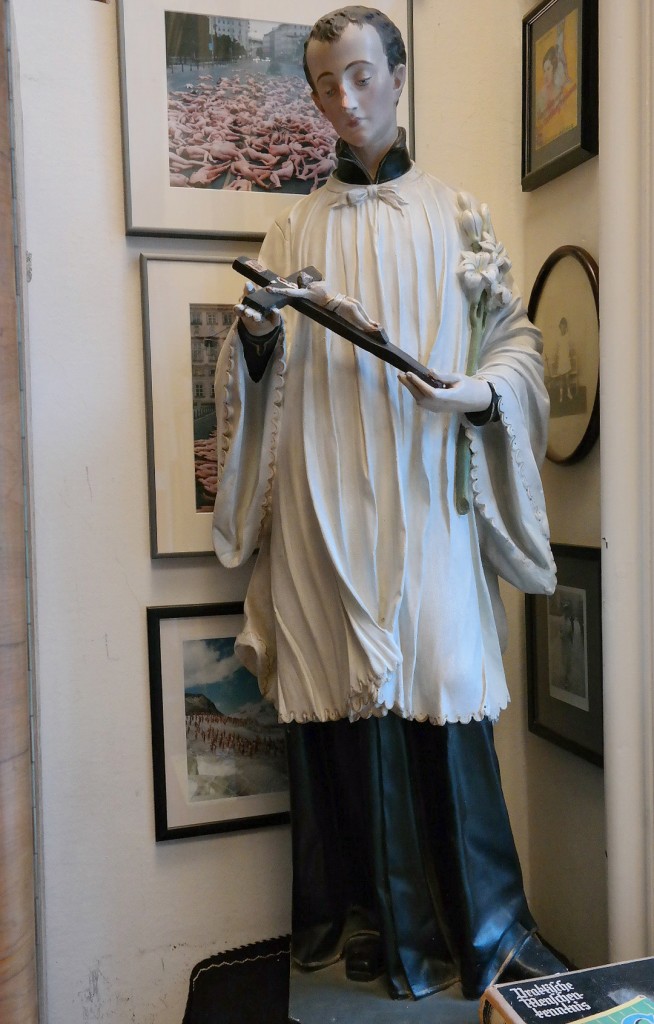
Dr. Matts favorite Saint: “Saint Antonius brings back everything.”
MS: The Protestantism in it’s alleged fallibility seems to be one of your favorite topics.
GM: I can see that you’re a Protestant. Catholics are being insinuated with hypocrisy and corruption, where in reality fantasy and forgiveness is. Look here Saint Antonius, my favorite Saint. What did I loose: From the PC at the airport-bus to the golden watch in the London tube. Saint Antonius brings back everything. Of course you have to pay, at least ten euros into the offertory.
MS: Doesn’t your cleaner get a complete break down when she comes here?
GM: She is psychological toughened and trained.
MS: You’re not afraid that she displaces or breaks something?
GM: She is acting absolutely respectful towards my things. I have to admit though, that it took some time to find the perfect cleaning lady.
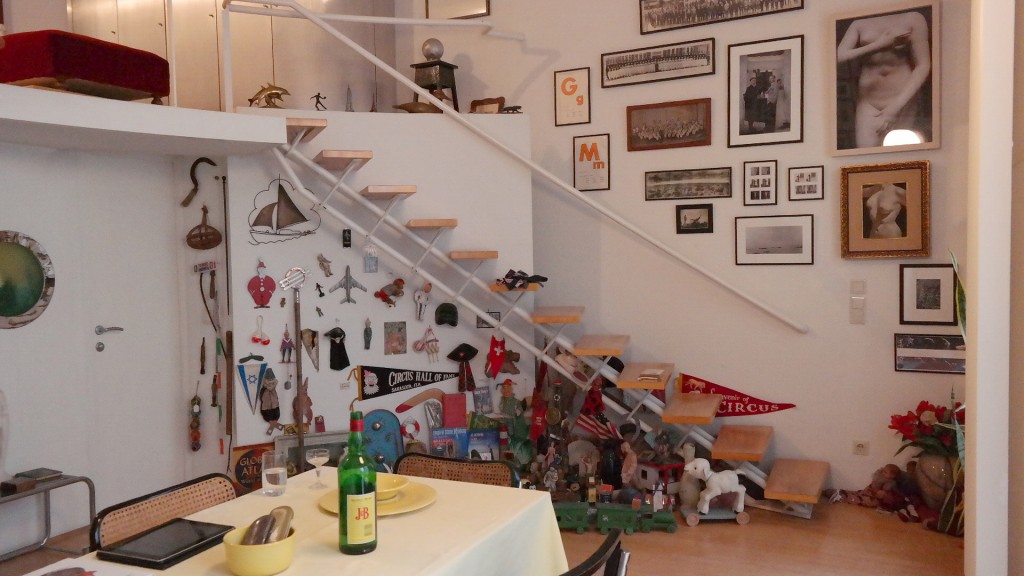
View to the devotional objects section
MS: There is almost no free space in your refuge. Did it use to be like this all the time?
GM: At the end of the 80s I started here with a mattress and a discarded hospital bed. Everything was white, it looked like a laboratory. And I lived out of my suitcase. To this day I still have a packed suitcase here in case I have to leave spontaneously. I’m prepared. Of course there’s a smoking in it, the most important piece of clothing if you want to establish in the immigration.
MS: What about your collection?
GM: It would be very sad, naturally, if I had to leave it behind and start a new. But it would be a new task at least. BvH
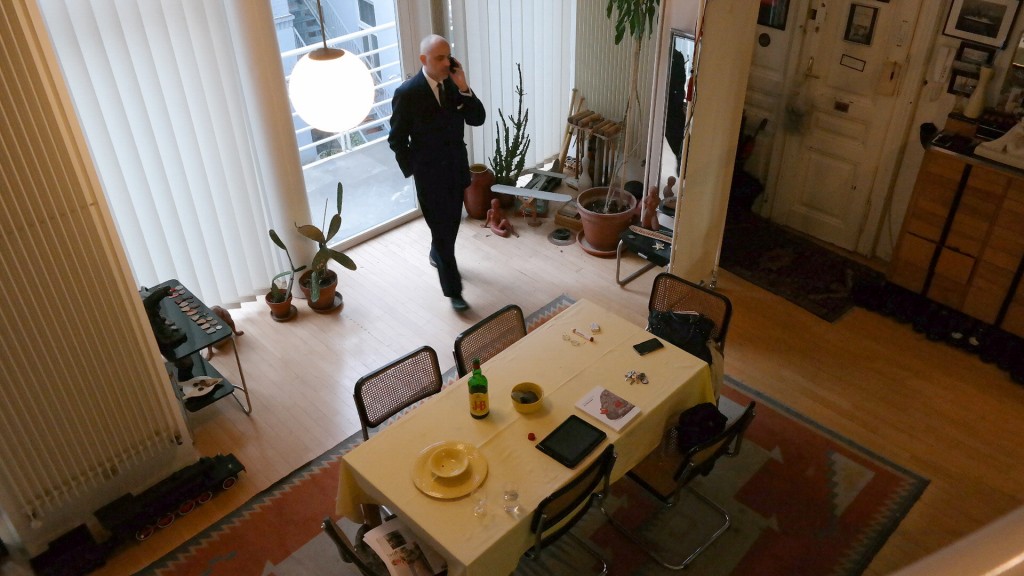
View from the gallery: Thonet chairs and a laptop on the table and Dr. Matt on the phone, the probably only technical objects of modern times in this apartment
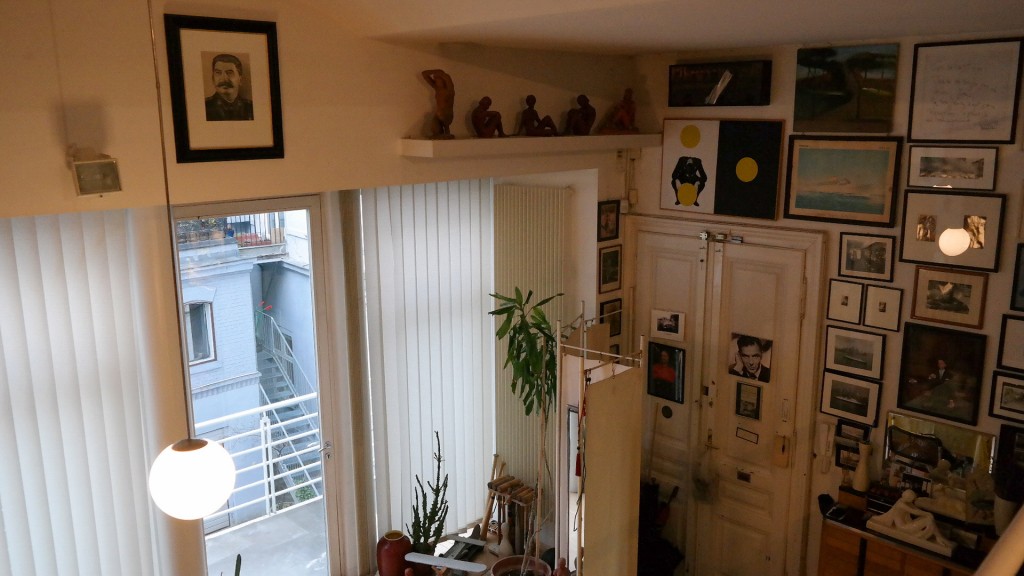
“The Stalin is basically hanging here as a deterrence. Surrounded by naked women. He’ll have to endure this. I bought it from a comrade during my travels between Moscow and Kiev for ten dollars. They did not want him anymore.”
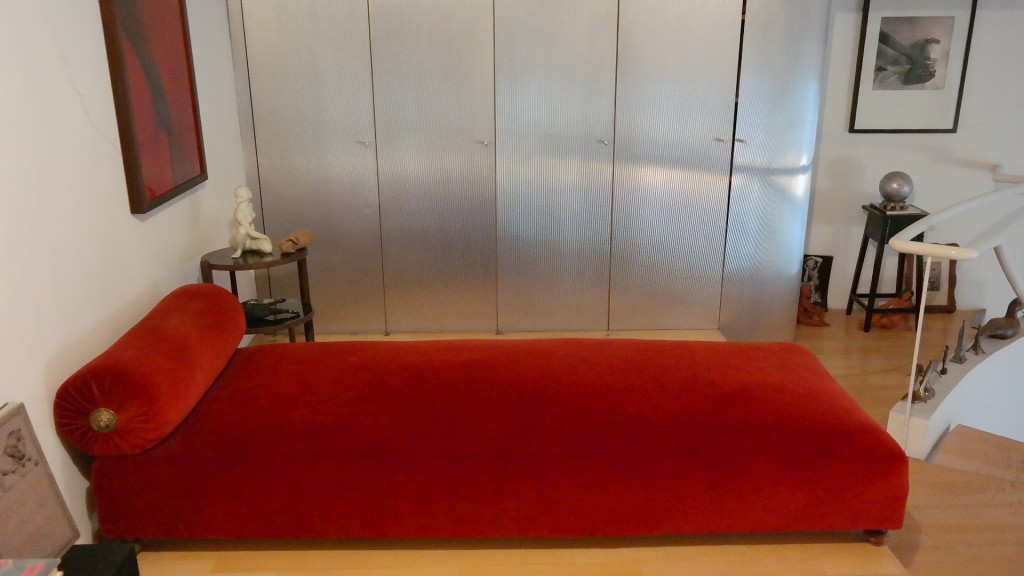
Red velvet canapé in front of a wall unit from Nirosta-steel in the style of old steel cabinets
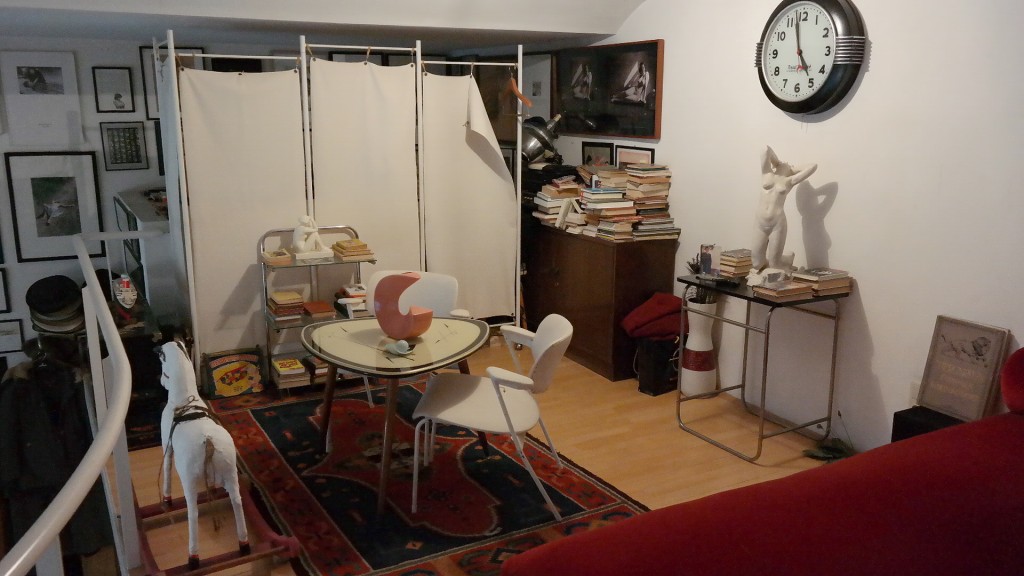
The clock was used as a requisite in Woody Allen’s movie “Bullets over Broadway” (1994). “I like this advanced, austere art deco.”
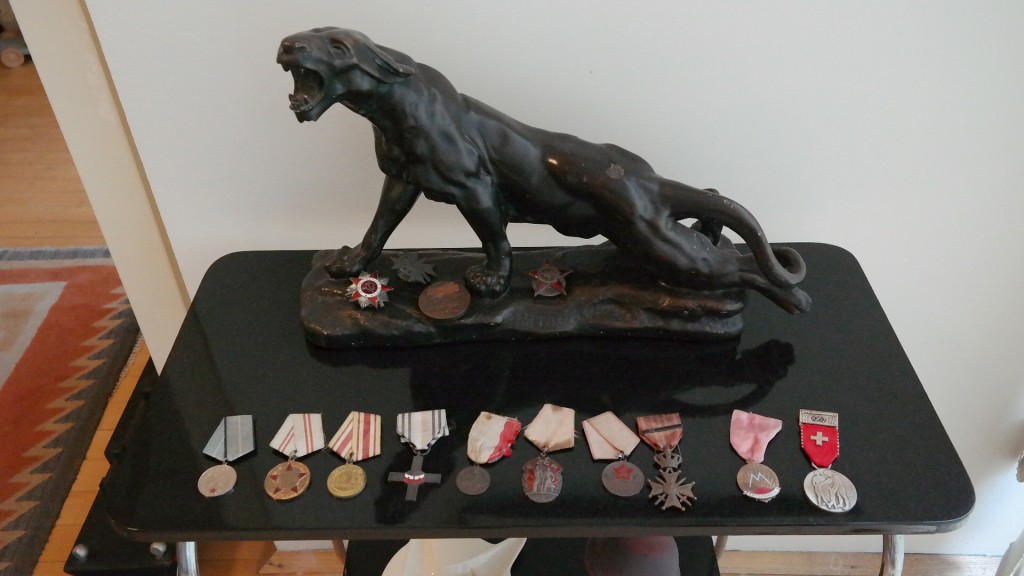
“I rather buy the medals favorably at the flea market then to kill someone or get into danger myself just to become a hero.”
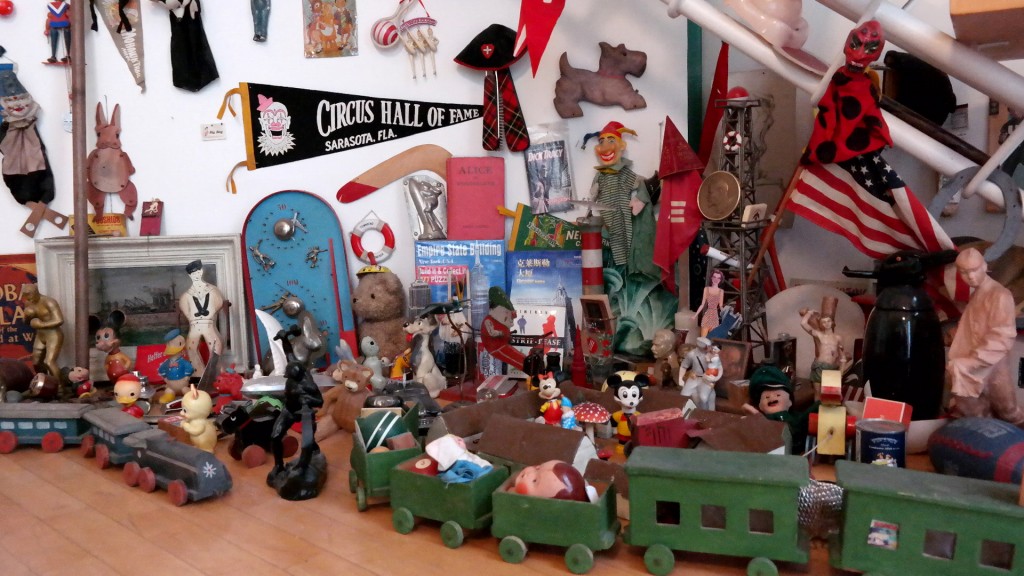
The devotional objects section: Among them an old punch figure from the Viennese flea market. “A favorite of mine comes from Sarasota in Florida, the book ‘Alice in Wonderland’ from a flea market in San Francisco.”
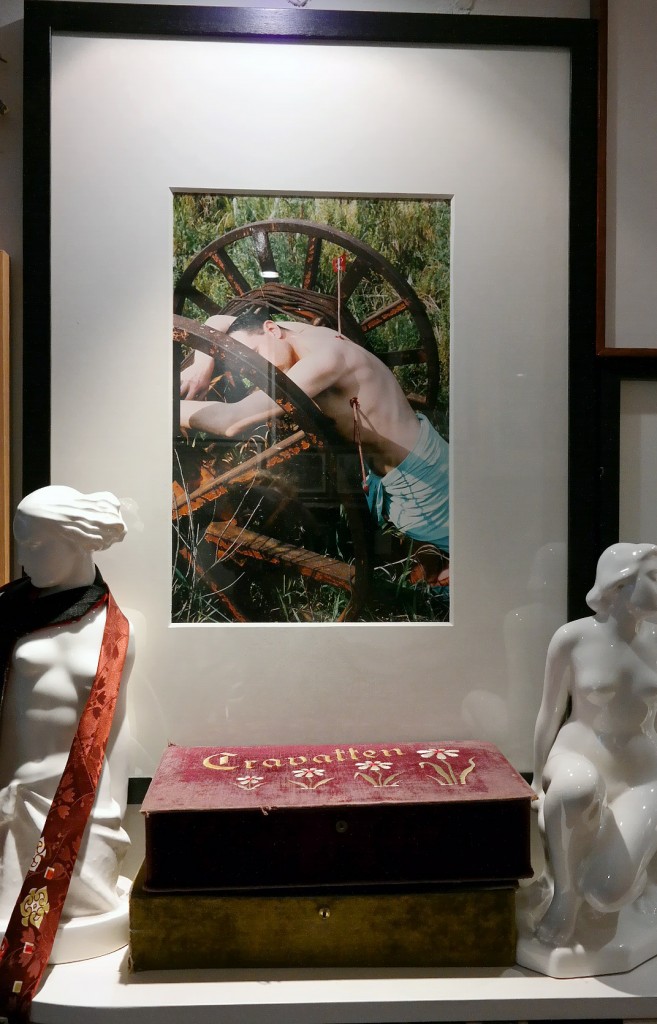
“I mix contemporary art with exhibits from the 20th century.”
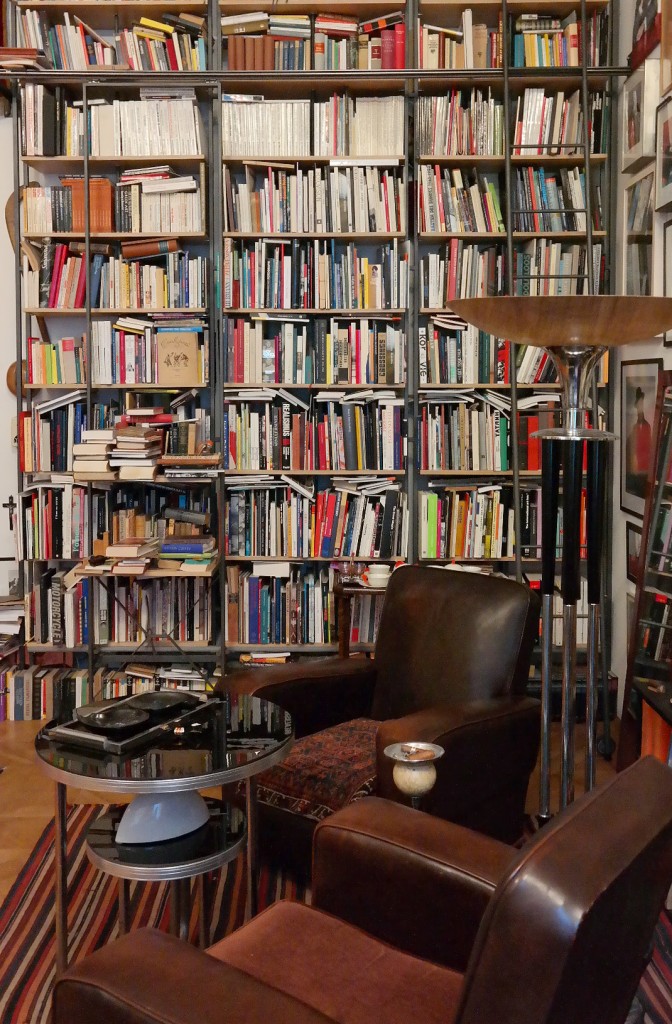
Hundreds of books stand in Gerald Matts shelves, among them old Tucholsky editions
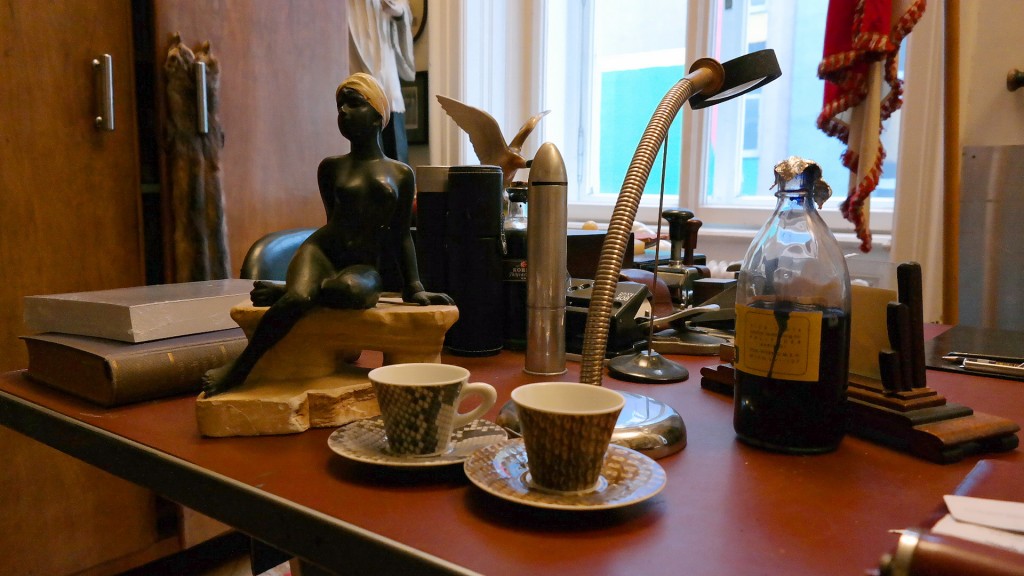
Stimulating details and decorations on the desk of the Art Manager
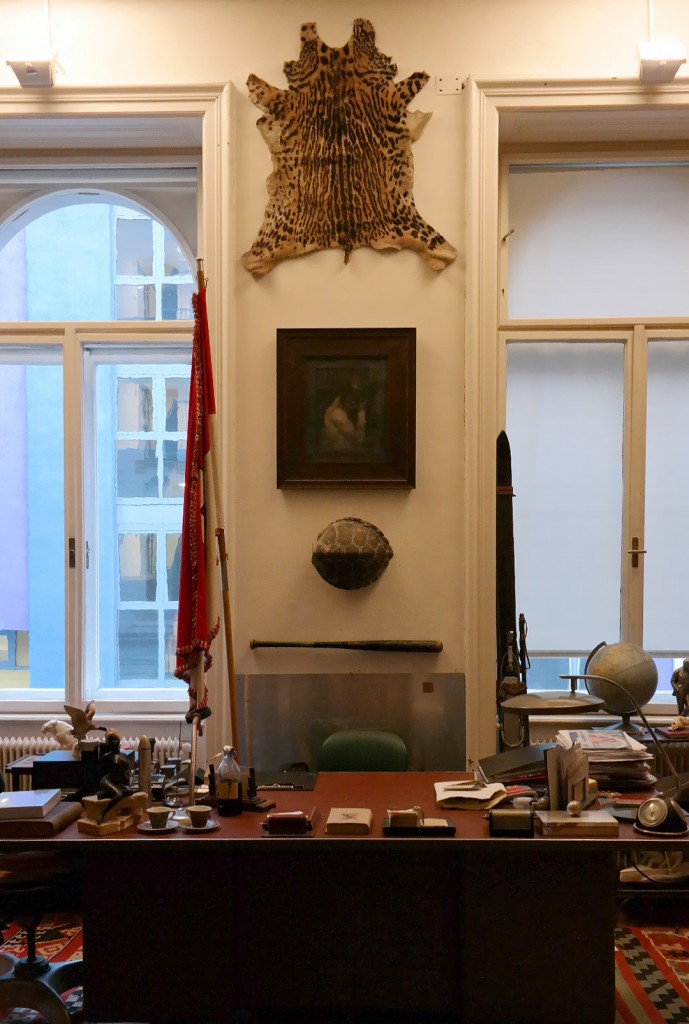
Still life à la Dr. Gerald Matt: The Austrian flag, next to it an ocelot in perfect harmony with a shark
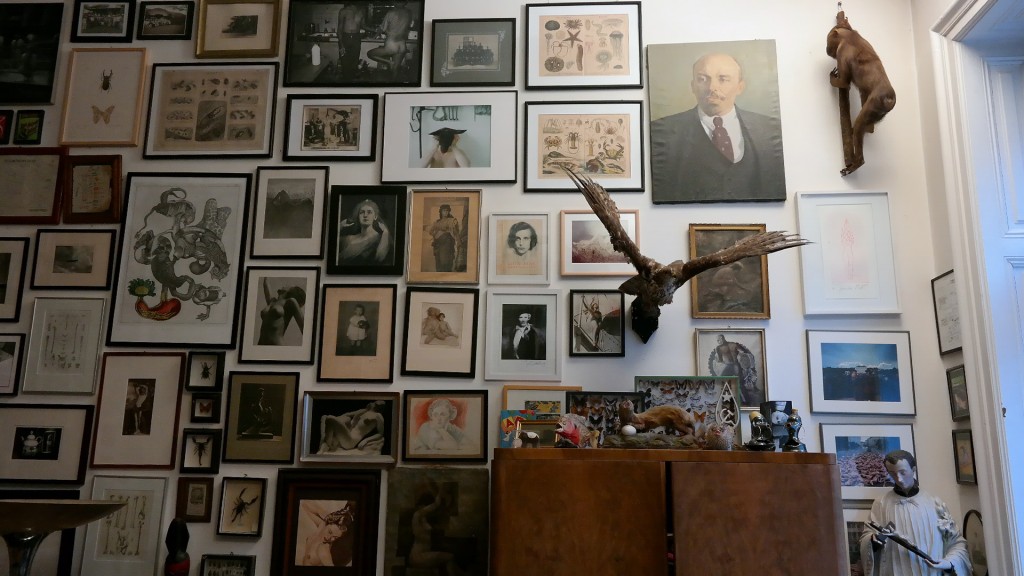
“Seen the monkey there? My wife finds it very creepy, that’s why it can only hang here.”

Of course, also the golf bags are from different times
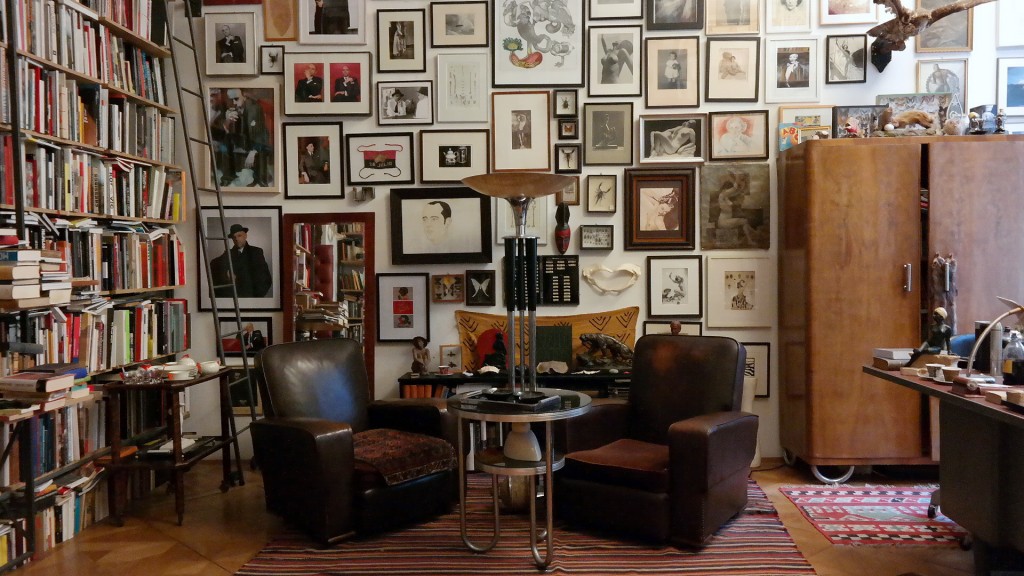
“My apartment reflects my inclination for the America of the 30s to 50s a bit.”
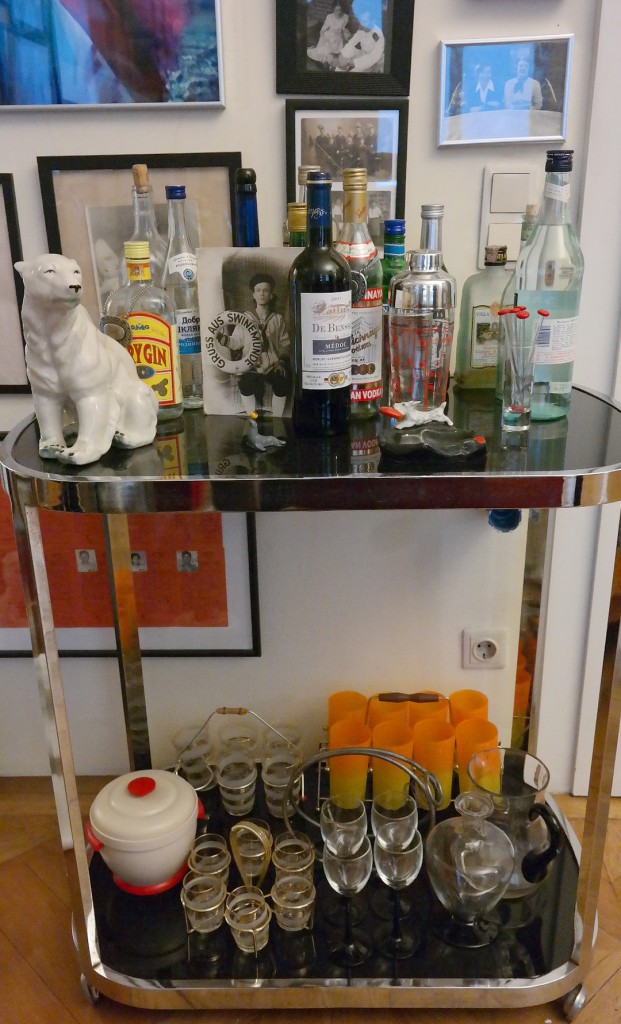
Art deco bar – strictly guarded by a ceramic polar bear
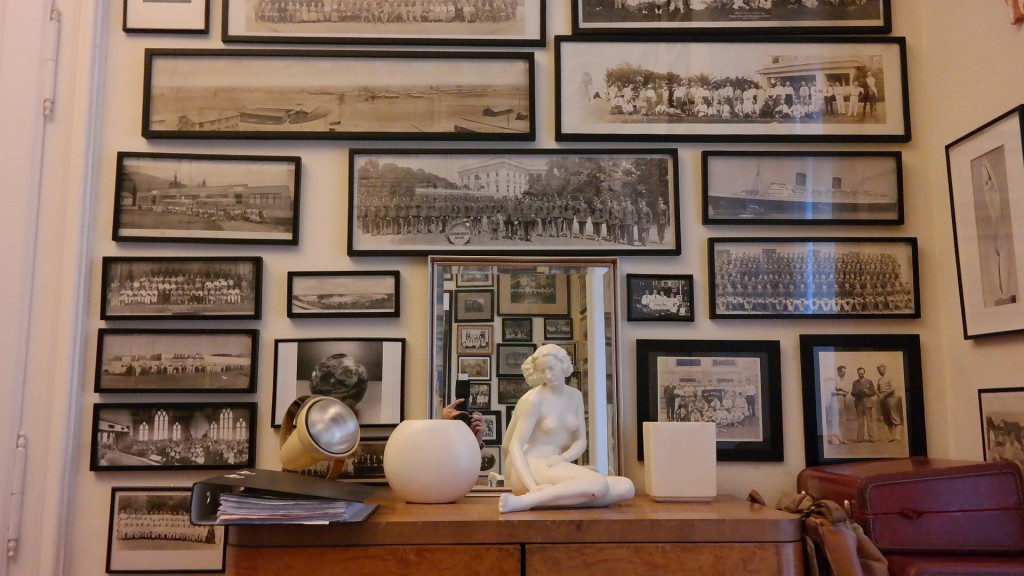
The landscape formats – so-called panorama pictures from 180 to 360 degrees …
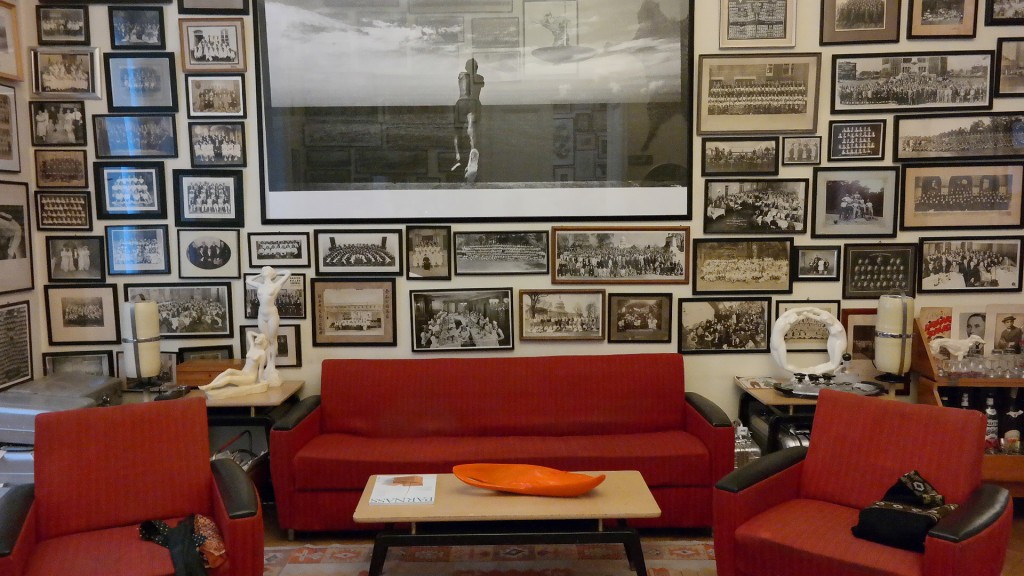
… amongst others show students of the university of Havana (1943) next to union photography’s, school class pictures, athletes, soldiers, crowd scenes:

“They are hanging here, because they tell history.”
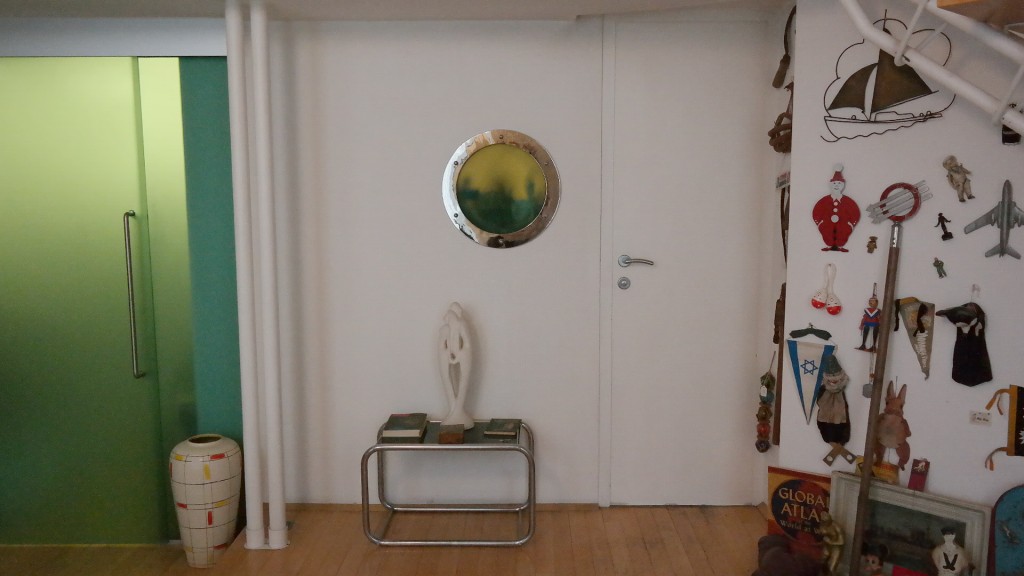
Ahoy! Behind the bullseye hides the bathroom
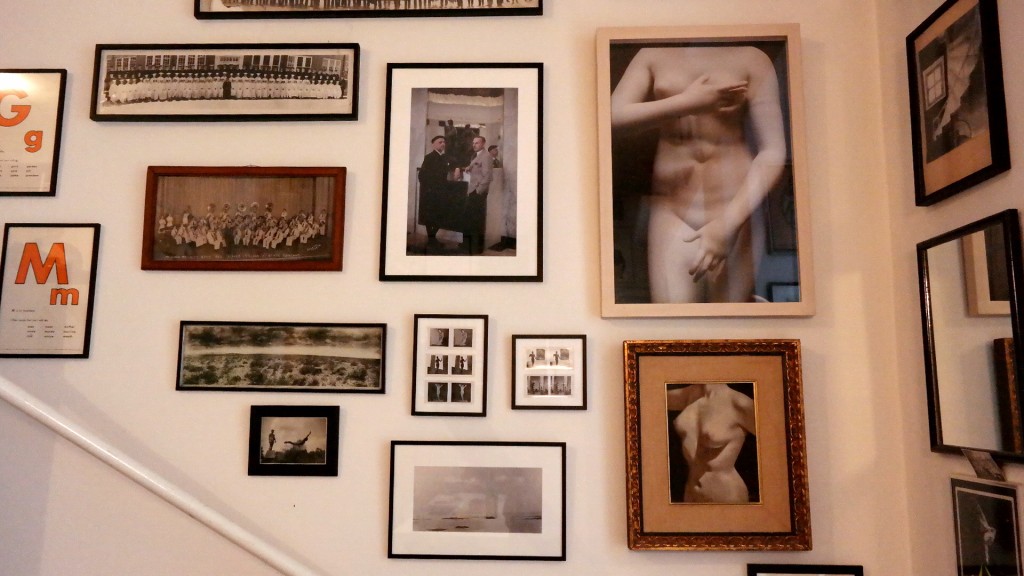
Stairway to the gallery
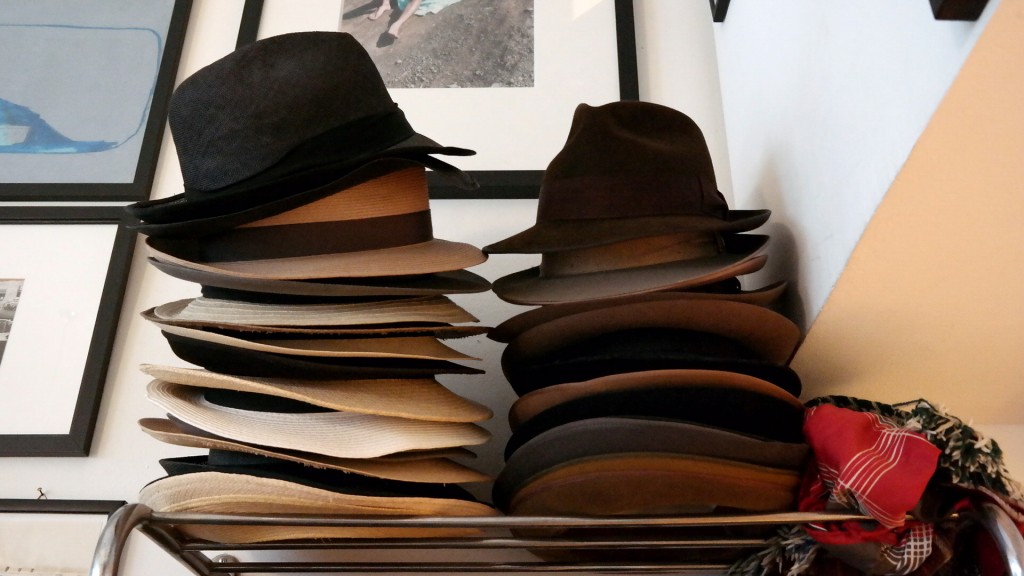
A gentleman never goes hatless
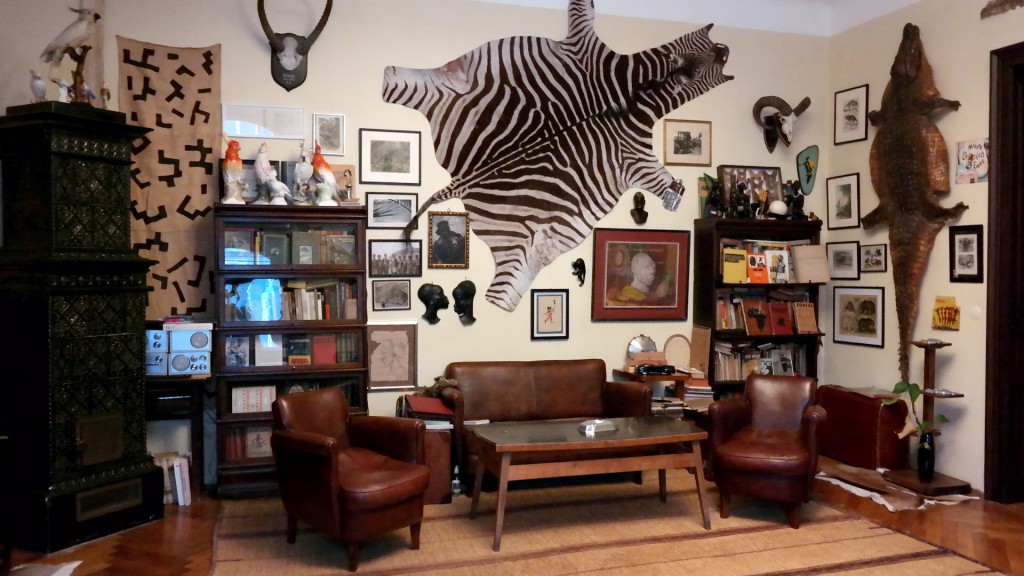
The African room with its exotic collection of trophies
Dr. Matts favorite flea markets:
New York: Between 6th Avenue and 23rd Street the garage sale in Chelsea
Mexico City: Great for silver cufflinks
Paris: Marché aux Puces for leather furniture from the saloons of officers from the 30s.

